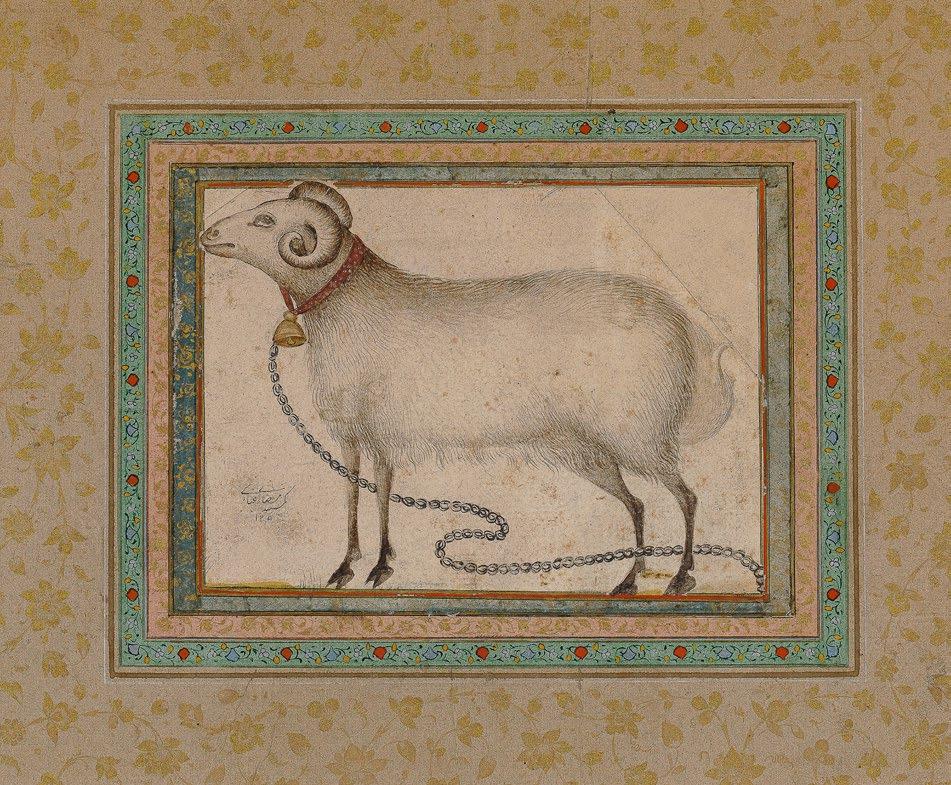
2 minute read
IRAN
20 - ASIAN ART SOCIETY
01
PeRsian miniaTURe dePiCTing a 'faTTailed' sHeeP
Iran 18th - 19th century Pigments and gold on paper, mounted as an album page with polychrome borders and a margin with a gold floral design Page: 22 cm x 33,5 cm Miniature: 10,5 cm x 14,1 cm Price: 5.000 euros
ObJeCt PReSented by:
Alexis Renard T.: + 33 1 44 07 33 02 E.: alexis@alexisrenard.com W: www.alexisrenard.com This amusing portrait of a fat-tailed sheep belongs to the tradition of siyah qalam drawings that were fashionable during the Safavid period. The drawing has an Arabic inscription on the right, as well as the number 127, which may be a serial number or a date. If a date, this would indicate 1127 on the Muslim calendar (1715 AD). The inscription is barely decipherable. It could be an apocryphal reference to the Persian painter Reza Abbasi.
JANUARY 2022 - 21
22 - ASIAN ART SOCIETY
02
PeRsian miniaTURe dePiCTing a sHeeP
Iran 18th - 19th century Pigments and gold on paper, mounted as an album page with polychrome borders and a margin with a gold floral design Page: 22,3 cm x 33,5 cm Miniatures: 9,5 cm x 12,5cm Price: 5.000 euros
ObJeCt PReSented by:
Alexis Renard T.: + 33 1 44 07 33 02 E.: alexis@alexisrenard.com W: www.alexisrenard.com This unusual and amusing portrait of a sheep follows the tradition of the single-sheet siyah qalam drawings that were popular during the Safavid period. The drawing bears an Arabic inscription – ‘depiction of a captive ram’ – as well as the number 125, which could be interpreted as the year 1125 on the Muslim calendar (1713 AD). It could also be an album page number.
JANUARY 2022 - 23

24 - ASIAN ART SOCIETY
03
JaR WiTH CalligRaPHiC design
Iran, probably Kashan Second half of the 12th century Moulded ceramic decorated in lustre and cobalt Height: 32 cm Provenance Formerly in the Achille Clarac collection (diplomat in iran in the 1930’s) by repute it has been acquired in Teheran with Andre Godard beetween 1935 and 1937 Price: 12.000 euros
ObJeCt PReSented by:
Alexis Renard T.: + 33 1 44 07 33 02 E.: alexis@alexisrenard.com W: www.alexisrenard.com This beautiful jar with molded decoration consists of an inverted pear-shaped body resting on a short foot. The wide collar has two handles.
This type of design, molded in relief, was very sought after in Seljuk Iran. This jar is decorated with a large kufic calligraphy inscription and dotted lines forming a frieze at the shoulder. A thick layer of cobalt blue glaze covers the entire upper part of the jar. The raised patterns are highlighted by the fact that they retain a thinner layer of glaze, and therefore appear lighter than their outlines.
Most monochrome Iranian ceramics of this type are using a turquoise glaze. Cobalt blue glaze like this are making this piece a beautiful and rare example of medieval Iranian ceramic.
JANUARY 2022 - 25






